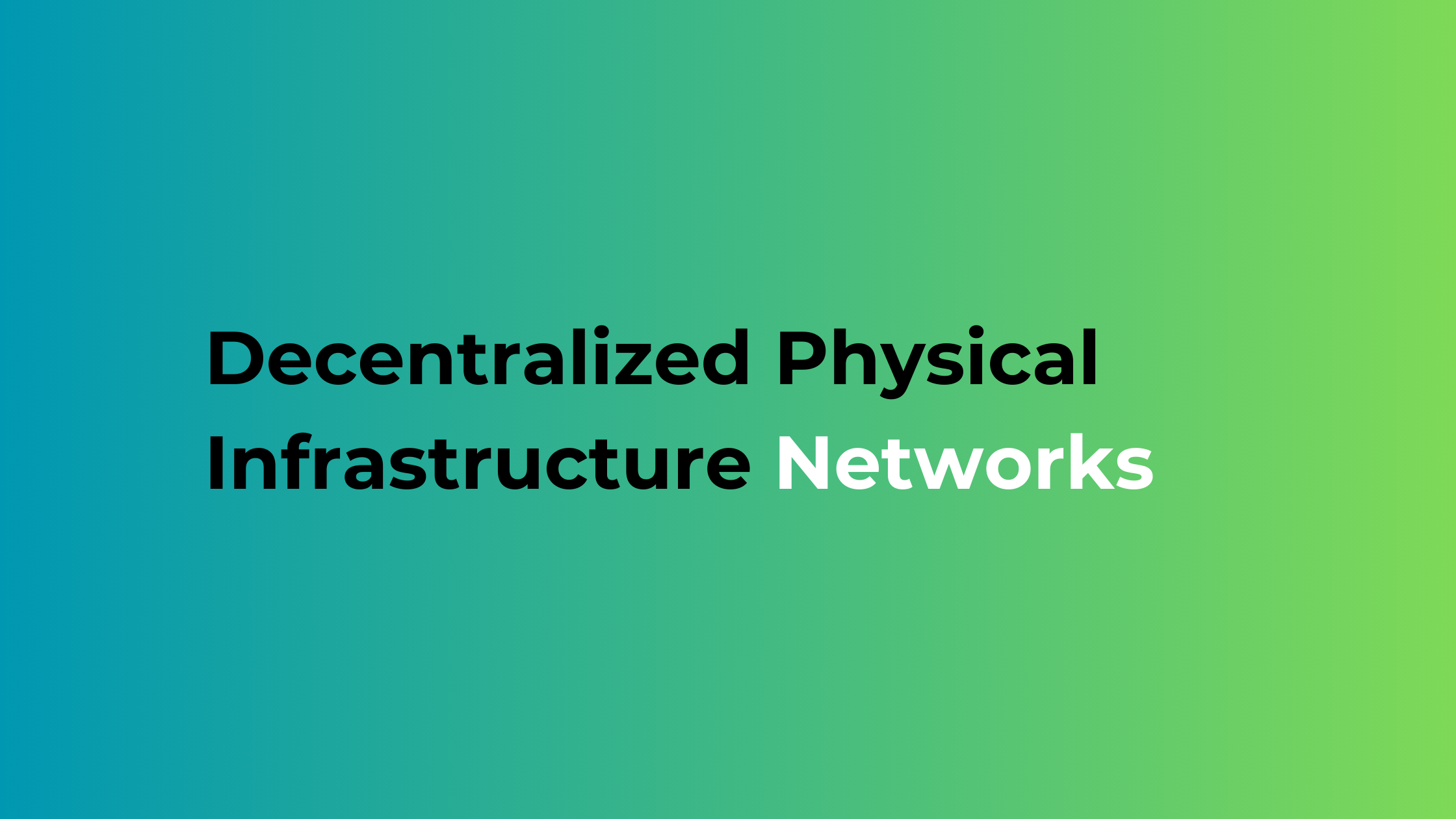Decentralized Physical Infrastructure Networks (DePIN)
 Boopathi Krishnan
Boopathi Krishnan
DePIN is a new paradigm in the blockchain sector closely related to artificial intelligence. In this article, you will learn what decentralized physical infrastructure networks are and how they can change the way we work in the future.
What is DePin?
DePIN is a term coined by Messari and is short for Decentralized Physical Infrastructure Networks.
Describes networks that pool resources to users, so that they provide these resources as a service and can adjust their price based on supply and demand.
The resources that make up these networks can provide storage, wireless networks, and GPU or CPU services.
Anyone who wants to contribute these resources to the network will take advantage of the incentives, which are in the form of tokens that are distributed to users.
Advantages of DePIN Protocols
The main advantage of these protocols is their efficiency in the use of resources they provide. Consumers rent available resources, thereby minimizing the number of idle or underutilized resources.
GPU DePIN Sketch
Also, it is a decentralized service , so users do not have to worry if there are problems with a centralized entity. In the event that any of the parts that make up the network fail, the service can be delegated to another part, considering that there are sufficient resources available. This management is carried out in an automated manner, which minimizes the impact it has on the end user.
In addition to this, it is a significant improvement for companies that need to rent expensive hardware for specific use. Until now, signing contracts, SLAs and conditions of use for the rental of computer equipment was a complex task. The use of Blockchain greatly facilitates this work, to the point of being able to provide resources immediately with a payment per use.
For this reason, DePIN also reduces the barrier to entry to access resources. Users no longer have to worry about managing purchases of hardware resources such as GPUs.
Running Cost
DePIN decentralizes infrastructure systems with almost unlimited scalability. The protocol distributes its control among the different providers, similar to how miners are managed in the Bitcoin (PoW) network.
When there is low demand for resources, suppliers will experience less workload. When there is high demand, the network activates more resource instances, increasing its capacity without disabling existing workloads.
The pricing models at DePIN are different from those at traditional installations or cloud providers. To establish the price, in addition to the cost that providers have to manage their facilities, factors related to the network are taken into account.
The network spends practically nothing to get started, and providers have a lot of flexibility in the resources provided. Overall, total costs are cheaper than the traditional alternative. The network is designed to provide the best possible service at the lowest possible cost. The calculation of incentives is critical for the proper functioning of the DePIN network.
Filecoin
Filecoin is perhaps the best known DePIN project. It provides a decentralized storage layer that allows anyone to store their data, just like you can on services like Dropbox or Google Drive.
It uses the Interplanetary File System (IPFS) , and incentivizes storage resource providers to guarantee security.
Like other protocols, Filecoin has an open market for anyone who wants to store their files or get paid to store other users' files.
The blockchain is supported by smart contracts on the Filecoin Virtual Machine (FVM).
Be a part of the DePIN Revolution!
Don't miss out on the opportunity to be at the cutting edge of blockchain and decentralized technology. The DePIN paradigm is transforming industries, offering unprecedented efficiency, reliability, and scalability. Take advantage of our DePIN Development services for your project.
Subscribe to my newsletter
Read articles from Boopathi Krishnan directly inside your inbox. Subscribe to the newsletter, and don't miss out.
Written by
